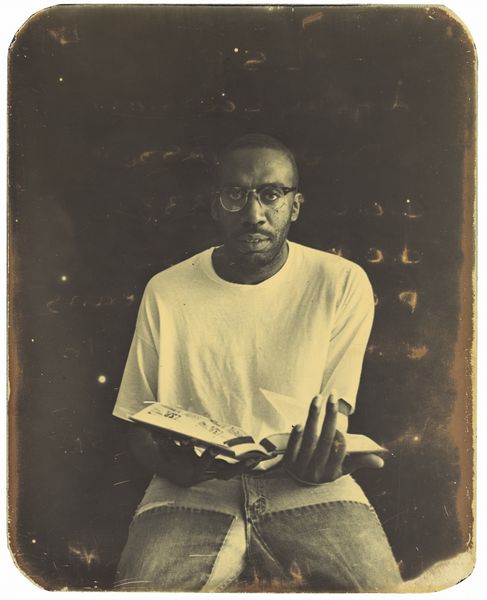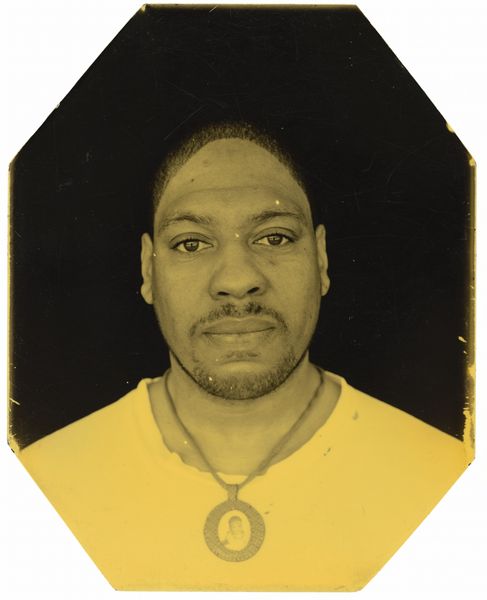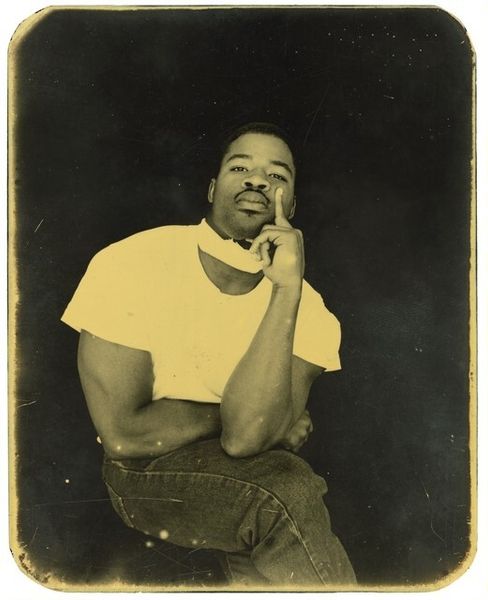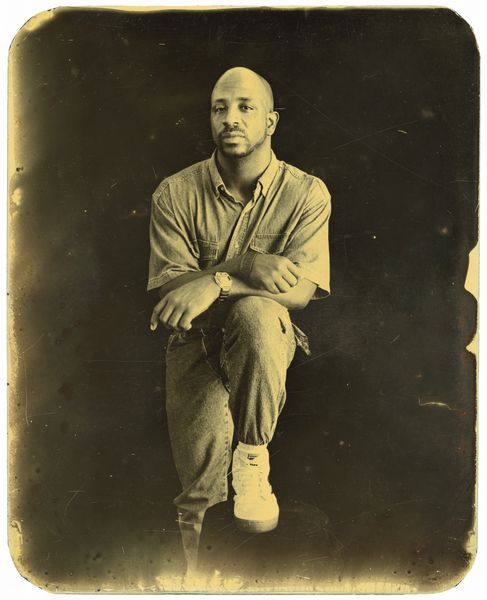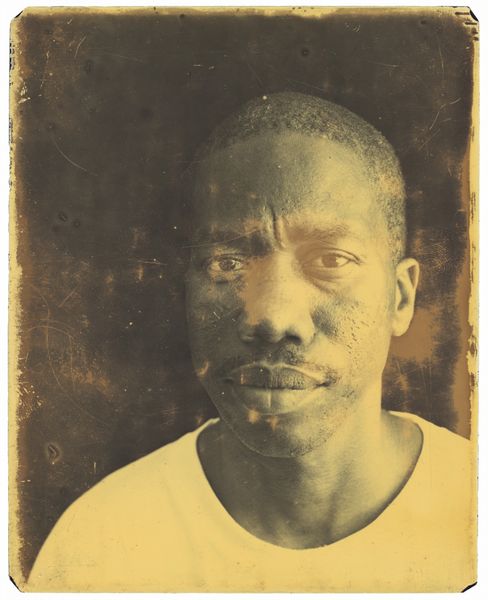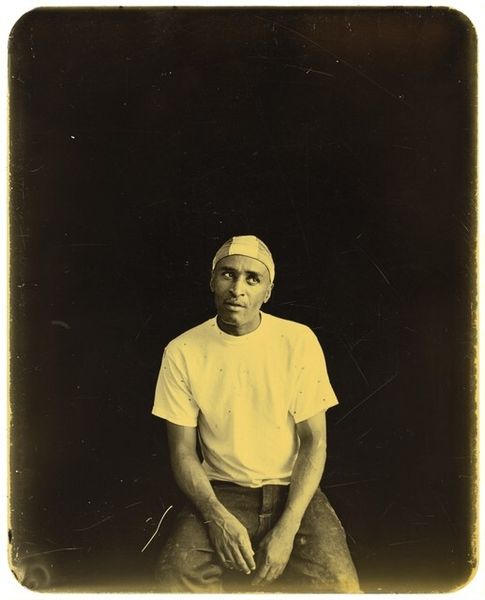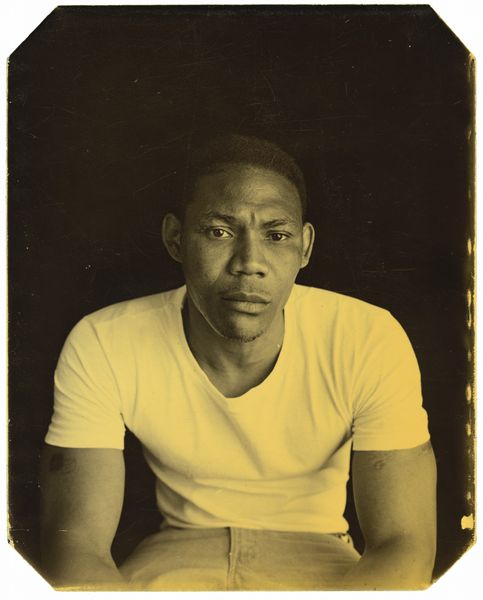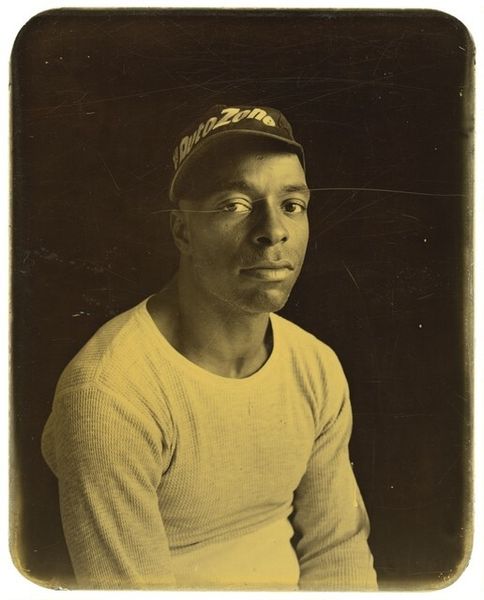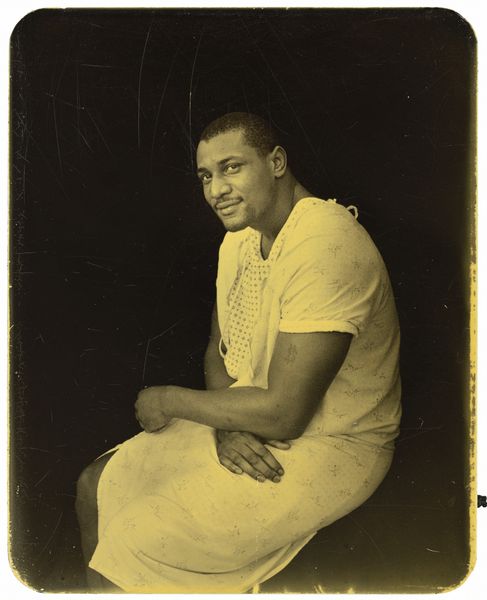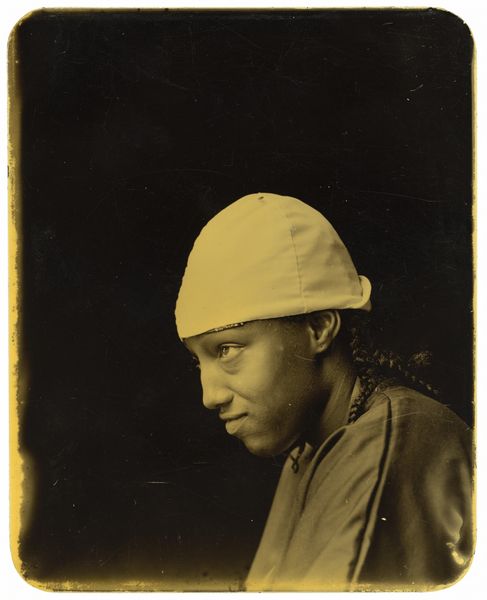
photography, gelatin-silver-print
#
portrait
#
photography
#
gelatin-silver-print
#
modernism
Dimensions: image/plate: 12.7 × 10.2 cm (5 × 4 in.)
Copyright: National Gallery of Art: CC0 1.0
Curator: Standing before us is Deborah Luster's portrait, "Angola, Louisiana," captured in March of 1999. It's a gelatin-silver print. Editor: My first thought is that this is not a snapshot. There's a stillness, almost like daguerreotype. I get a gravity here; it has the feel of an old tintype. Curator: Exactly, Deborah's work explores difficult realities often with an arresting aesthetic. Note the surface abrasions – are those chemical remnants, chance encounters or intentional flaws? Editor: Well, the imperfections certainly deepen the impact; I can see the figure wears long sleeves and jeans, a simple pen clipped in his pocket. His hands seem carefully clasped, but they give a strange tension in such a small detail. And he gazes right back. Curator: Yes, those circles around the edges could even resemble planetary movements—the prison context layered onto something cosmic. Editor: It creates this uncanny duality. Is this the photo equivalent of memory? Imperfect but still capable of communicating power? Curator: I think you are on to something; by using that antiquated process she seems to give a nod to lost innocence or a record of past realities. The sitter’s clear-eyed gaze hints he is far from invisible; the photographic chemistry and symbolic composition do not leave the viewer room to look away, but reflect. Editor: Indeed! Like historical accountability made art. Curator: Agreed. A perfect intersection of artist's message and symbol for the modern world. Thank you for sharing.
Comments
No comments
Be the first to comment and join the conversation on the ultimate creative platform.


